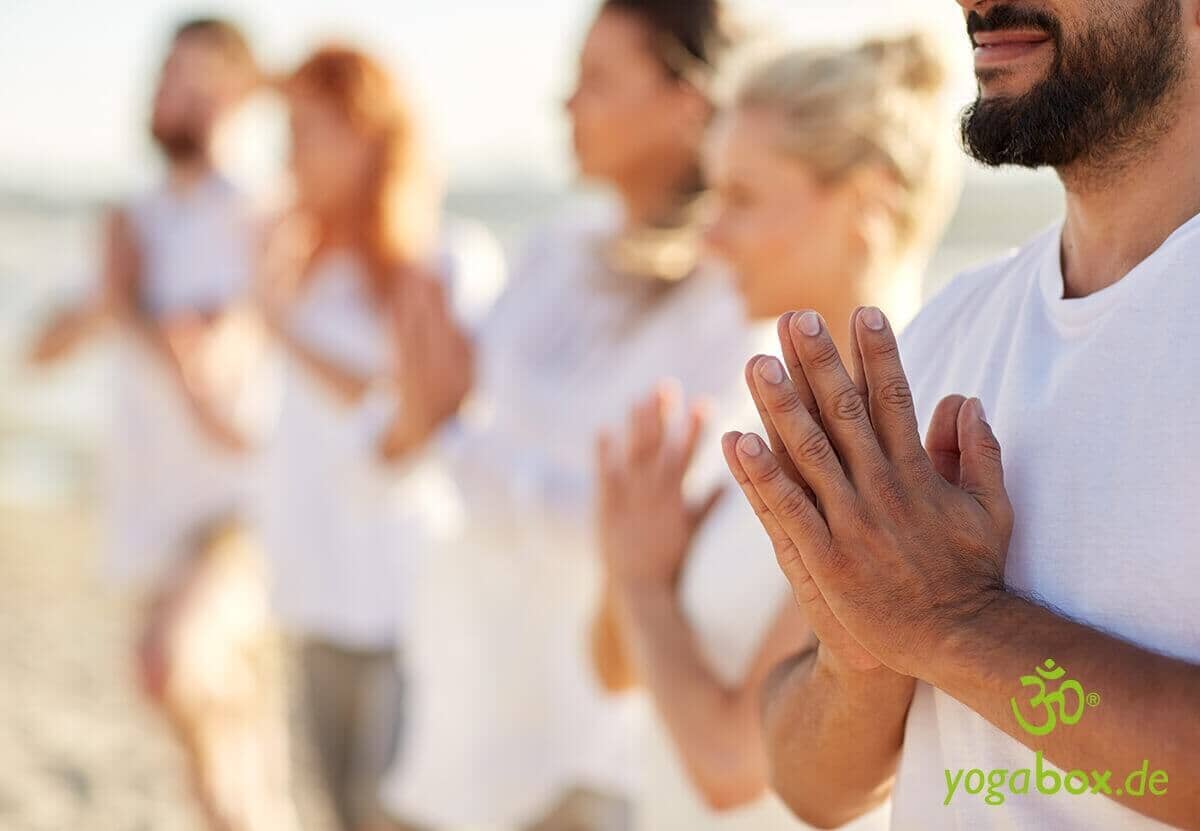Setu-Bandhasana, the Yoga Bridge Setu-Bandhasana, the bridge pose, is a counterpart to Shoulderstand and Plough Pose . It is an effective foundational pose in the popular Yoga Vidya series. The bridge pose is followed by the Wheel Pose (Chakrasana) or the Fish Pose (Matsyasana) . In the following guide, you'll learn how to perform this yoga exercise correctly, what to keep in mind, its benefits, and who it's suitable for, or who should avoid. How does the Setu-Bandhasana Bridge work? To perform this yoga pose, lie on your back and raise your legs. Place your feet hip-distance apart. Your knees and ankles should be in a straight line. Place your arms lengthwise, palms facing down. Inhale and slowly lift your back. You can support your back with your palms. Gently roll your shoulders. Touch your chin with your chest, but do not move it. Tighten your buttocks, and rest your body weight on your shoulders, arms, and feet. Breathe calmly throughout the pose and hold for about two minutes. Exhale to end Setu Bandhasana Bridge. What are the effects of the Setu-Bandhasana Bridge?
Physical Benefits of Setu-Bandhasana Setu Bandhasana Bridge can release tension in the lumbar spine and neck, as well as strengthen the wrists, legs, and buttocks. The exercise has an invigorating effect, especially for a tired back. The thighs are strengthened. The muscles are strengthened and stretched. The same applies to the chest, neck, and spine. The latter remains or becomes flexible and revitalized. The entire front of the body is intensely stretched, and the back of the body is strengthened. The exercise also contributes to the normalization of thyroid function, which can prevent or alleviate symptoms. Furthermore, it promotes the expansion of the abdominal organs, thus positively affecting digestion. This yoga pose opens the lungs, which can also improve breathing. It is also beneficial for asthma, high blood pressure, and osteoporosis. In the bridge pose, the abdomen is higher than the heart, which improves the return of blood to the heart. The abdominal organs can also regenerate. This yoga pose is also helpful during menstruation and for menopausal symptoms. Mental, energetic and spiritual benefits of Setu-Bandhasana
This yoga pose calms the brain, can reduce anxiety, and contributes to stress reduction and alleviates depression. The bridge is considered a rejuvenating exercise. Spiritually, the practice helps achieve wholeness. Who is the Setu-Bandhasana Bridge not suitable for? When performing Setu Bandhasana Bridge, contraindications should be strictly observed. Anyone suffering from neck, thyroid, or lower back problems should only perform this yoga pose after consulting a doctor, alternative practitioner, or yoga instructor. People with severe lower back pain should not perform the bridge pose from shoulder stand, but rather from a supine position. Inversion poses should also be avoided in cases of eye disorders, retinal detachment, high blood pressure, or serious heart conditions. Conclusion These were the best tips for the Setu Bandhasana Bridge. Whether you're suffering from tension, back pain, or lack of mobility, this yoga exercise will help you feel stronger and more flexible. This isn't just beneficial for professionals who sit for several hours a day, or who carry heavy loads or generally perform physically demanding tasks. The exercise helps maintain correct posture and thus avoid various ailments. Image © fizkes / 123rf.com


